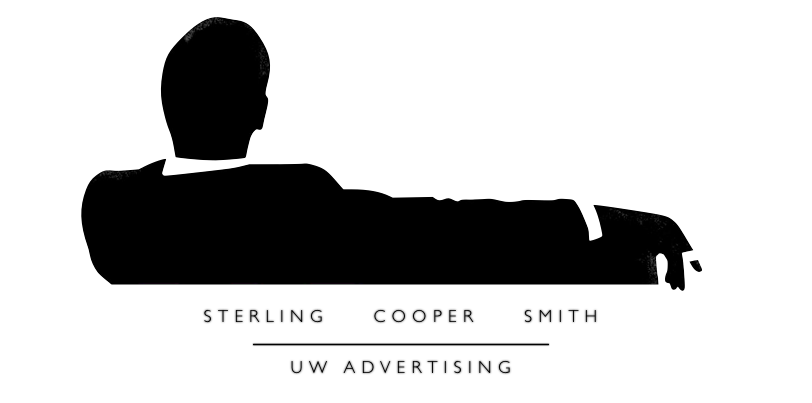The process of creating advertising campaigns is transformed from pencil pushing to an art form in the television series Mad Men. To me, the recurring “light bulb” idea moments stood out as the more memorable of the first season. There are many scenes that fall under these criteria but Don’s idea pitch scene in “The Wheel” and the ad campaign created for Menken’s stand out more than the others. Acting as a looking glass into a previously unexplained world, these scenes also led me to ponder how modern ad agencies conduct their ad campaigns. I’ve decided to explore modern advertising techniques by examining the campaign for a product anyone reading this is sure to have consumed: Mad Men.
The ad campaign for Mad Men is incredibly iconic with its enticing and bold use of colors and art styles as well as its strategic and captivating use of music and other media. The first season of Mad Men employed the techniques of the always interesting, and downward spiraling, Amy Winehouse with the use of her song “You Know I’m No Good” for the show’s commercial spots. This move was incredibly intelligent of the advertisers marketing Mad Men to the public. Amy Winehouse’s music is a combination of modern pop and 60’s jazz, a clear reference to the show’s combination of modern and retro: issues of the 60’s mixed with racy modern plot-lines.
One similarity between the Menken’s ad campaign and Mad Men’s is the use of new age technique and thought in the marketing of a product. Much like Sterling Cooper’s addition of modern European fashion and innovative displays and customer service at Menken’s, the advertisers behind Mad Men build buzz for the series through promotion via blogs, Twitter and Facebook. The advertisers have even created a mini game online called "Mad Men Yourself" where fans can create their own Mad Men-ified copies of themselves. Mad Men is also in a joint campaign with Banana Republic with “Mad Men characters and images alongside Banana Republic looks” to promote the show and act as a “testament to the broad influence the series has had on the world of fashion design” ("AMC and Banana Republic Extend 'Mad Men' Marketing Promotion for a Second Year").
Linda Schupack, the mastermind behind the marketing of Mad Men, created the ad campaign in this way to not just earn viewership but “to entertain people." Don Draper is incredibly privy to this concept as scene in his monologue in “The Wheel” and various other rants in the series on the general public. The public, according to Don, wants to be entertained by their advertising not told what to do by it. How appropriate that advertising for Mad Men emulates the virtues of Don Draper?
(The articles cited in this post (check them out) also have plenty of other Mad Men advertising shenanigans performed by Schupack and her team, including shrink wrapping a train in Grand Central Station and handing out Sterling Cooper business cards.)
Links referenced:
http://www.newyorker.com/talk/2009/07/27/090727ta_talk_schulman
http://www.mediaite.com/online/interview-amc-goes-meta-marketing-mad-men

No comments:
Post a Comment